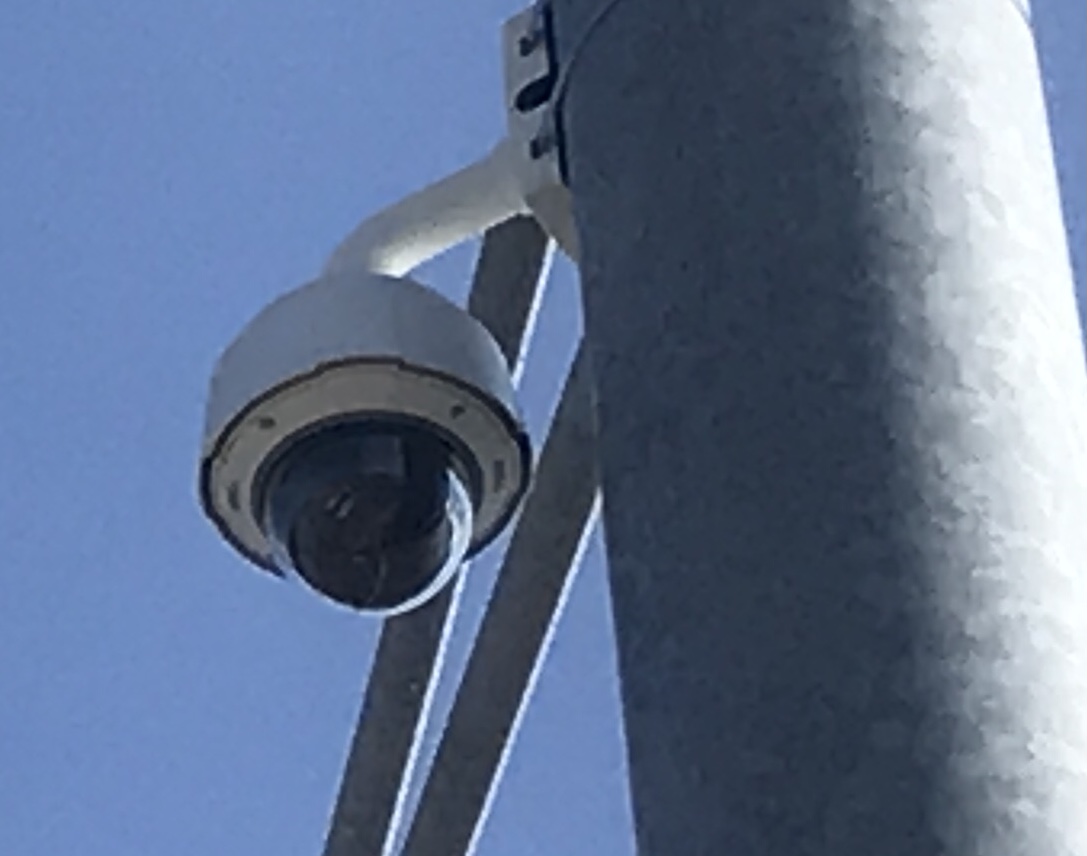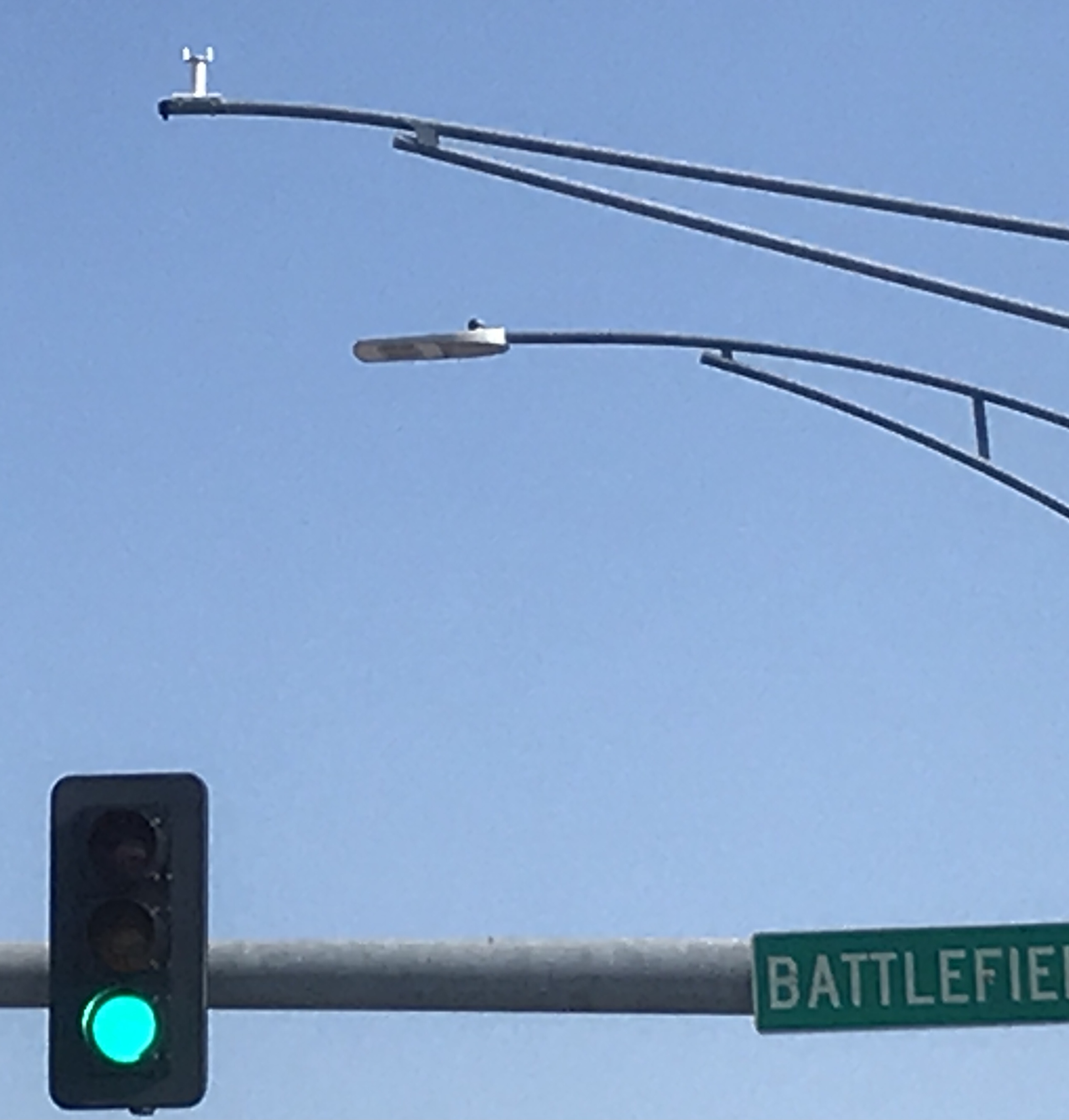Traffic lights aren't what they used to be. Today's versions at major intersections have gizmos and attachments that not only help control and watch traffic, but also assist police in finding car thieves and crime suspects.
In June, I noticed a thread in Springfield Reddit that talked about one of the latest high-tech items used in police work — the Flock (a brand name) license-plate reader.
In early July, the News-Leader wrote about them.
In Springfield, there are 21 license-plate readers used by police at 21 different intersections. They are solar-powered. The camera can read the plates of vehicles from all directions.
I went to Glenstone and Battlefield and took photos of the devices on the traffic-light supports — including the license-plate reader.
“The original pilot program with Flock Safety was launched in 2021 and has since become a permanent asset to the department,” says Cris Swaters, spokesperson for Springfield police.
Camera captures plate, make and model, but not speed
I obtained the city's contract with Flock Group, Inc., based in Atlanta. There is a middleman — referred to as the re-seller — in the transaction, Insight Public Sector, Inc., in Chandler, Arizona.
The City of Springfield paid $59,850. The contract is for Oct. 6, 2022 to Oct. 5, 2023. The city must agree to a renewal.

Flock Safety license-plate readers take snapshots of cars as they drive by the equipment, assisting investigators with locating stolen cars or suspects.
They can be used, for example, during Amber Alerts, when police need information quickly.
The camera captures the plate number; the color and make of the vehicle; the time when the vehicle was seen at the intersection; and how many times that same plate has passed the camera in a set time frame, such as 30 days.
The cameras do not capture the speed and do not provide an image of the driver.
From what I've read, some people are concerned the data from the cameras can be used to track the movements of law-abiding drivers and can be sold for marketing purposes.
That won't happen, Swaters says, at least not with Springfield police cameras.
“Data collected is stored and used by law enforcement for investigative purposes,” she said. “It is not shared or accessed by any outside entity. Unused data is deleted after 30 days.”
According to the Flock website, the company also markets its license-plate reading cameras to private businesses and to homeowners associations interested in beefing up security.
Here is a rundown of the other high-tech equipment at the traffic lights at Glenstone and Battlefield. In one case, a bracket is in place where a camera once was.

The device mounted to the horizontal beam is a radar-based detector for vehicle presence. It lets the traffic signal know if there is a vehicle at the stop-bar below (where traffic should stop at a red light.)
The detection of a vehicle at the stop bar does not necessarily mean the driver immediately gets a green light, says Marc Lewis, Missouri Department of Transportation traffic center manager. Instead, the traffic signal knows someone is waiting.
The above photo is where there once was a camera-based detector. The camera-based detectors have been replaced by the radar-based detectors, Lewis says. The cameras would ice up in winter and did not work as well when there was sun glare.

The license-plate readers are powered by solar panels like the one in the top of the above photo. The camera itself is not visible because it's on the other side of the support column.

The camera in the above photo monitors traffic flow and accidents at the intersection. Cameras like this one at Battlefield and Glenstone are part of the Ozarks Traffic system in which traffic engineers, public agencies like fire and police and the public can monitor traffic and traffic accidents in real time.

What you see at the top of the above photo is a bracket where a camera was once placed. The camera has been removed; it has been replaced by a newer and better radar-based vehicle detector, says Lewis, with MoDOT.
Removing the bracket would require shutting down the intersection, Lewis tells me. MoDOT typically waits until major work needs to be done on the intersection or the traffic signals.
This is Pokin Around column No. 121.

